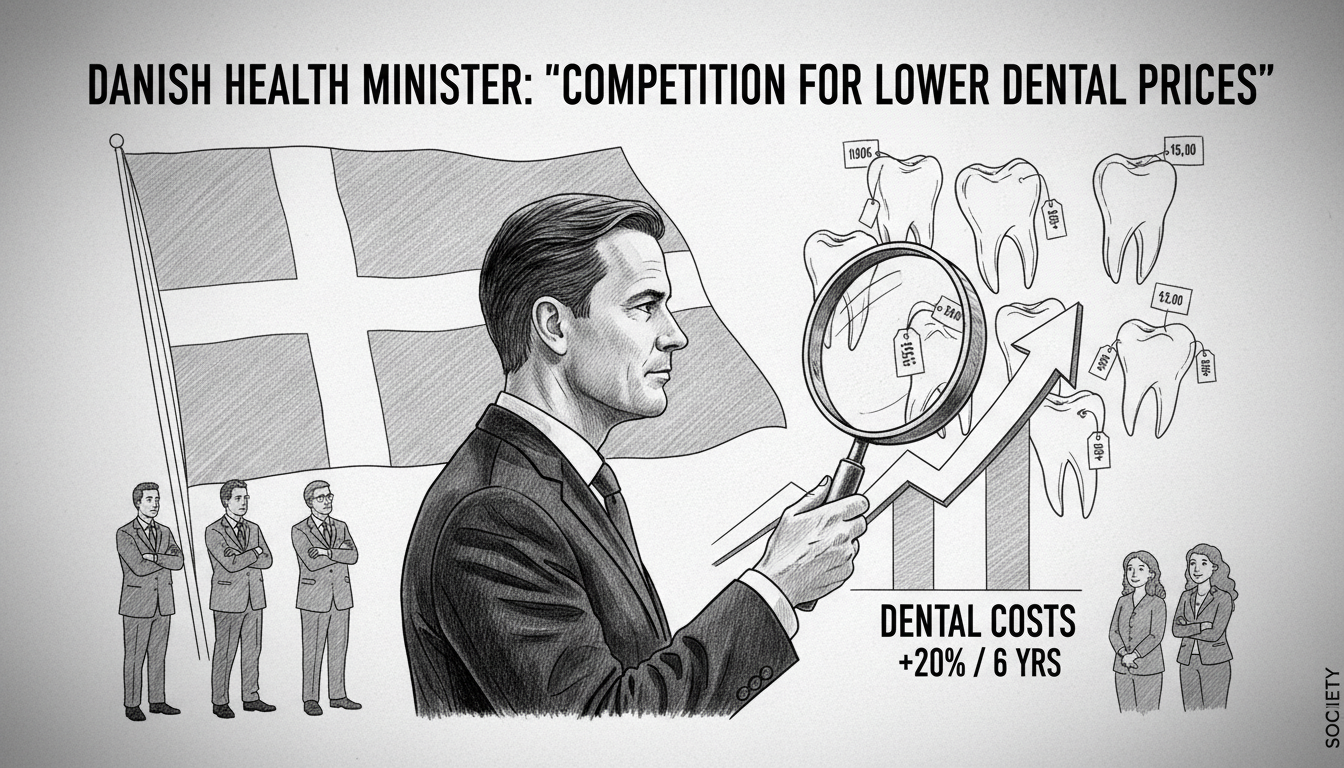Danish Health Minister Sophie Løhde wants to make dental care more affordable for adults. She has called for political negotiations about a new model for adult dental care. The move comes as dental treatment prices have surged significantly in recent years.
A government working group examined competition in the dental industry ahead of November negotiations. Their report reveals dental treatment costs jumped 19.5 percent over a six-year period. During that same timeframe, general healthcare prices increased by only 12.2 percent.
Løhde believes stronger competition will lead to lower prices. She stated this should help more Danes visit dentists regularly. The current system features fixed prices for many common dental services. These include checkups, cleanings, and X-rays.
The proposed changes would eliminate fixed pricing for dental procedures. Instead, the report suggests implementing maximum prices while allowing discounts. Analysts argue this approach would strengthen competition among dental providers.
Not everyone agrees the plan will work. Health economist Marie Kruse from the University of Southern Denmark expressed skepticism. She noted Denmark faces a shortage of approximately 100 dentists nationwide. Kruse doubts prices would drop significantly even with completely free pricing.
The Danish Consumer Council supports the maximum price concept. Chief economist Morten Bruun Pedersen called the shift from price control to competition beneficial for consumers. He believes this transition represents positive change for dental patients.
The Danish Dental Association opposes the proposed measures. Chairman Torben Schønwaldt argued dental treatments constitute healthcare services rather than consumer goods. He considers competition-focused approaches inappropriate for healthcare. Schønwaldt also questioned whether eliminating fixed prices would have any effect. He suggested current prices already sit at artificially low levels.
This debate highlights Denmark's ongoing struggle with healthcare accessibility and affordability. The country's universal healthcare system famously covers most medical services. Dental care for adults remains a notable exception. Many Danes pay out-of-pocket for routine dental visits and procedures.
The proposed changes reflect broader European trends in healthcare reform. Several countries have experimented with market mechanisms in traditionally public sectors. The Danish government appears willing to test whether competition can improve dental care affordability.
Success remains uncertain given the dentist shortage. Basic economics suggests limited supply with constant demand typically maintains high prices. The government must address workforce shortages alongside pricing reforms.
International readers should understand Denmark's hybrid healthcare model. The system combines universal coverage with private elements. Dental care represents one area where personal financial responsibility plays a significant role. This explains why pricing reforms generate such intense debate.
The outcome could influence similar discussions in other Nordic countries. Sweden and Norway face comparable challenges balancing public healthcare ideals with practical realities. Denmark's experiment with dental competition may provide valuable lessons for its neighbors.

